Work application letter template
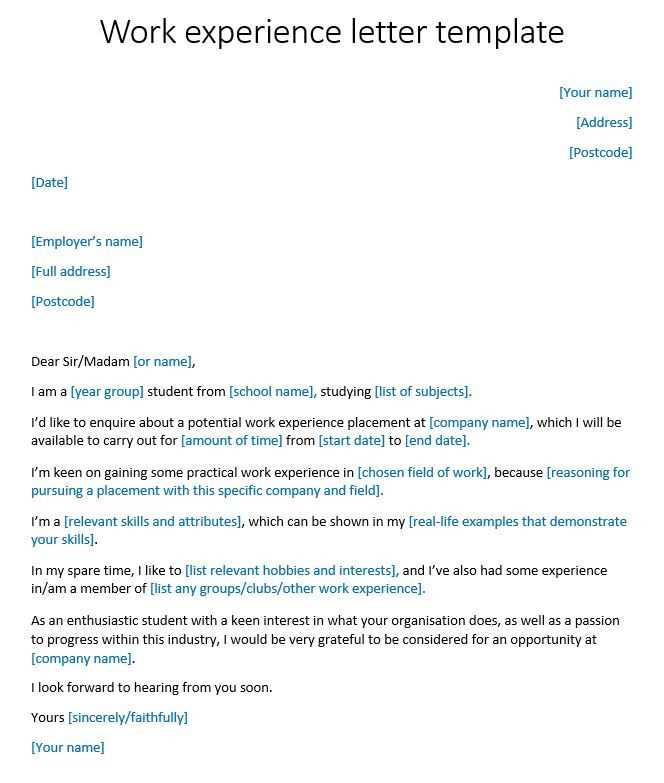
Use this simple and clear work application letter template to create a strong first impression. Make sure to tailor each section to your personal experience and the job you’re applying for. This template ensures that you present yourself confidently while maintaining professionalism.
Heading: Start with your name, contact information, and the date at the top. This will set the tone and make it easy for the employer to contact you.
Salutation: Address the hiring manager directly if possible. If you don’t know their name, use a general greeting such as “Dear Hiring Manager” or “To Whom It May Concern.” Be respectful and polite.
Introduction: Begin by stating your interest in the position and where you found the job listing. Be concise, but express enthusiasm for the opportunity. A solid opening will grab the reader’s attention.
Body Paragraphs: In this section, describe your qualifications and experience. Focus on how your skills match the job requirements. Use specific examples of your past work, highlighting achievements that show how you can add value to the company.
Conclusion: End with a call to action. Mention that you look forward to the possibility of discussing your application further. Thank the employer for their time and consideration.
By using this structure, you can confidently craft a letter that stands out while keeping things clear and professional.
Here are the revised lines with minimized repetition:
Consolidate similar phrases to avoid redundancy. For example, replace “I am highly experienced in working with data and have extensive experience in data analysis” with “I have extensive experience in data analysis.” This reduces wordiness while keeping the meaning clear.
Use precise language to eliminate unnecessary details. Instead of saying “I am extremely passionate about developing innovative solutions,” simply say “I am passionate about developing solutions.” This keeps the focus on key strengths.
Example of improved sentence structure:
| Original Sentence | Revised Sentence |
|---|---|
| I have a lot of experience in project management and I have worked with a lot of teams to complete projects on time. | I have extensive project management experience and have collaborated with teams to deliver projects on time. |
| My skills include a strong ability to manage multiple tasks, and I have a proven record of managing multiple projects simultaneously. | My skills include managing multiple tasks and a proven record of handling projects simultaneously. |
Additional tips for tightening your writing:
Avoid excessive adjectives and adverbs. Focus on delivering clear, direct statements about your skills and accomplishments. For instance, instead of saying “I am highly skilled and very experienced in managing teams,” opt for “I am skilled at managing teams.” This minimizes fluff without losing meaning.
- Work Application Letter Template
Craft a concise, tailored letter that highlights your skills and enthusiasm for the job. Focus on what makes you a good fit for the role while staying professional and clear.
- Introduction: Begin with a brief statement about the job you’re applying for, how you learned about it, and why you’re interested.
- Skills and Experience: Mention relevant skills, qualifications, or experience that align with the job requirements. Highlight specific achievements or experiences that prove you can contribute to the role effectively.
- Why You’re a Good Fit: Explain how your background and expertise directly match the company’s needs and the position you’re applying for. Focus on what you can offer them.
- Call to Action: Close the letter by expressing your eagerness to discuss the position further in an interview. Politely request the opportunity to meet and share how you can contribute.
- Closing: End with a professional sign-off, like “Sincerely” or “Best regards,” followed by your name and contact information.
Keep your tone friendly yet formal, and tailor each letter to the specific job. Avoid generic phrases and focus on what makes you unique for this opportunity.
Choose a clear, professional structure for your application letter. Keep it simple and easy to read. Avoid clutter and focus on presenting your qualifications clearly. Stick to a standard business letter format that includes your contact information at the top, followed by the employer’s details, and then the date. This creates a formal appearance and makes it easy for the hiring manager to reach out to you.
Layout and Structure
Start with a formal greeting, like “Dear [Hiring Manager’s Name].” If you don’t know the person’s name, use “Dear Hiring Manager.” Begin the letter with a strong opening sentence that grabs attention, explaining the role you’re applying for and why you’re a great fit. The body should be divided into short paragraphs focusing on your experience, skills, and why you want to work for the company. End with a call to action, such as “I look forward to the opportunity to discuss my qualifications further.”
Font and Spacing
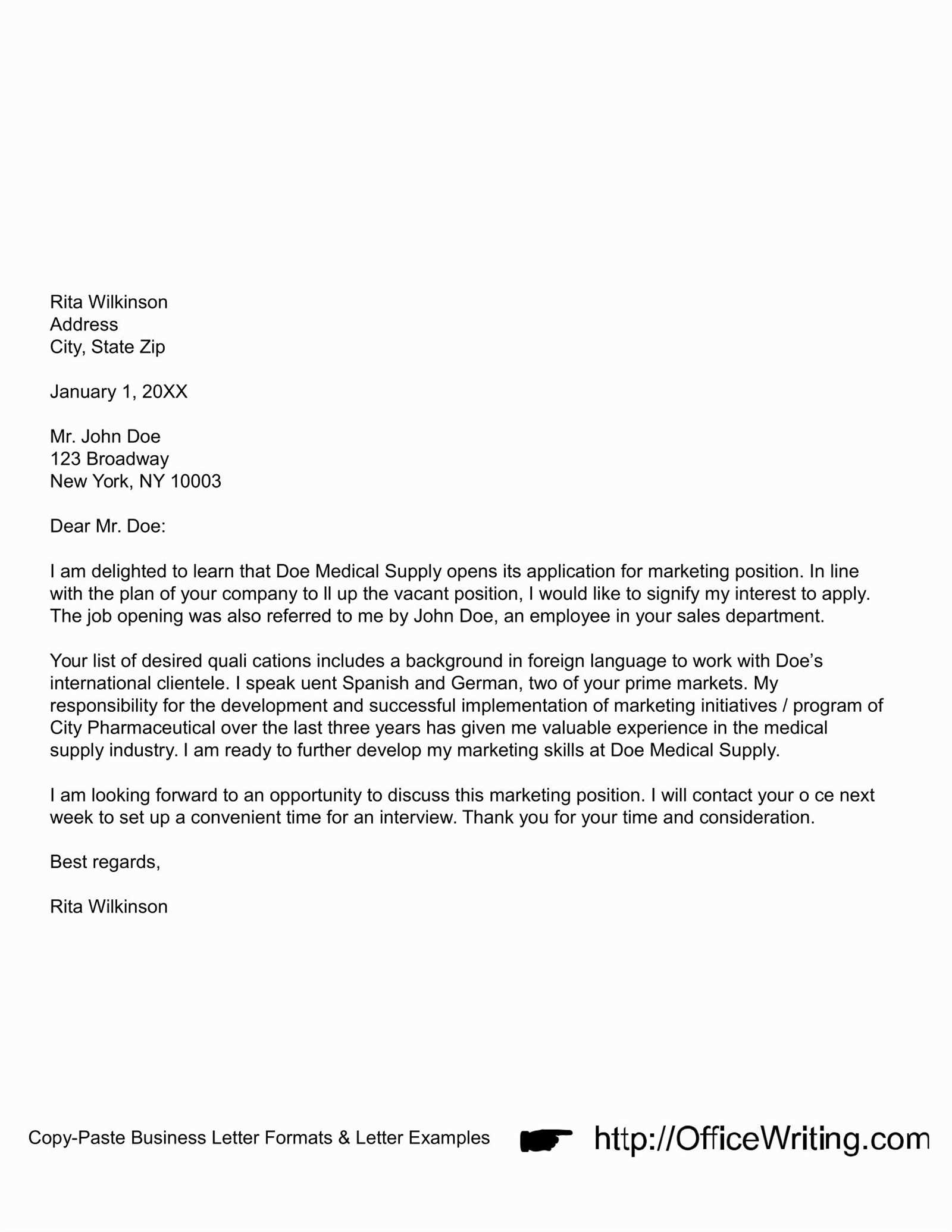
Use a professional font like Arial or Times New Roman in size 10-12 pt. Keep the margins around 1 inch on all sides and leave space between paragraphs. This will ensure that your letter looks polished and is easy to read. Avoid fancy fonts or excessive formatting that can distract from the content.
Tailoring Your Experience to Job Requirements
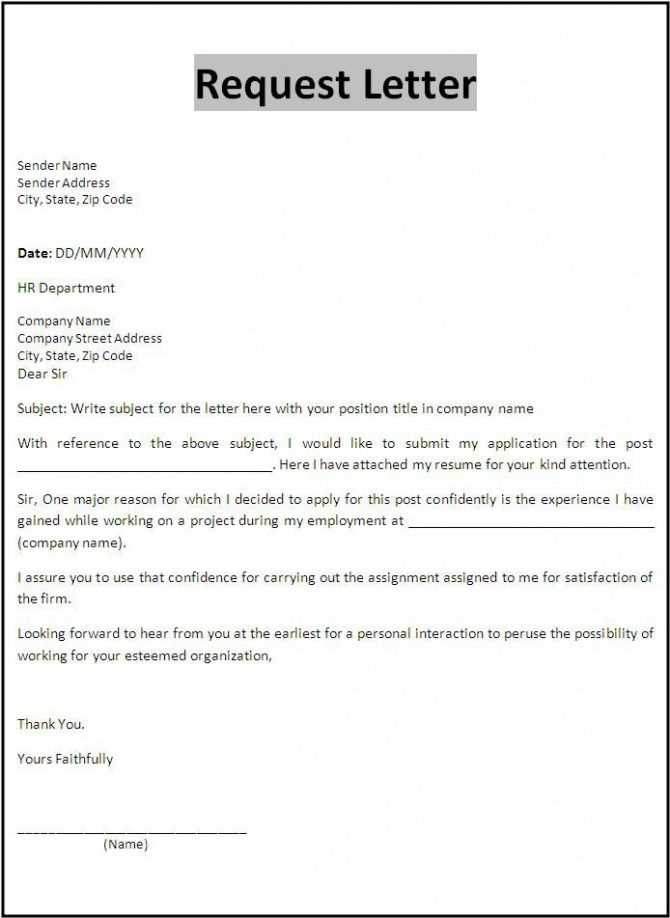
Analyze the job description and identify the specific skills and qualifications mentioned. Focus on matching your experience directly with these requirements. Highlight past roles or projects where you’ve demonstrated the exact competencies the employer is seeking. Customize each bullet point in your resume or cover letter to reflect how your experience aligns with the job’s needs.
Be Specific with Examples
Instead of using generic statements, provide concrete examples. For instance, if the job asks for strong communication skills, describe a situation where you successfully led a team or resolved a challenging issue through effective communication. Quantify your achievements with numbers, percentages, or timeframes to make your experience stand out.
Show Relevance Through Keywords
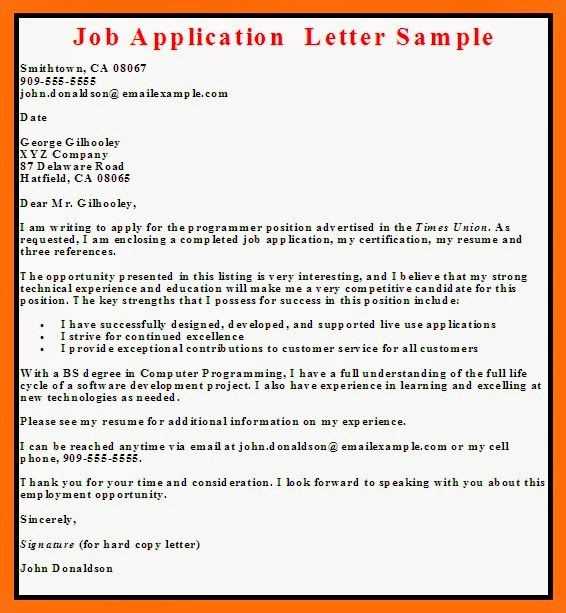
Incorporate keywords from the job listing into your application. This not only demonstrates that you’ve read the job description carefully but also helps your resume pass through Applicant Tracking Systems (ATS), which often screen for specific phrases. Aligning your experience with these keywords makes your application more likely to grab the recruiter’s attention.
Be clear and direct in your closing paragraph. Reaffirm your interest in the position and express enthusiasm about the potential to contribute to the company. Focus on how your skills align with the job requirements and how you can add value. Keep it concise but impactful, leaving a positive impression. End with a call to action, such as expressing your desire for an interview or further discussion. Always thank the reader for considering your application. This reinforces your professionalism and leaves a lasting note of appreciation.
Avoiding mistakes in your application letter can make a significant difference in how you’re perceived by hiring managers. Here are some common errors to steer clear of:
- Using a Generic Template – Personalize your letter. Tailor it specifically to the job you’re applying for, showing your enthusiasm for the company and role.
- Focusing Too Much on Yourself – While it’s important to highlight your qualifications, make sure to demonstrate how you can benefit the employer and contribute to the team.
- Neglecting to Proofread – Typos and grammatical errors can be a red flag. Proofread your letter carefully to ensure it’s polished and professional.
- Repeating Your Resume – Your application letter should complement your resume, not just repeat it. Use it as an opportunity to explain why you’re a good fit for the position.
- Being Too Formal or Too Casual – Striking the right tone is key. Aim for a professional, but approachable and friendly tone that matches the company culture.
- Ignoring the Job Requirements – Address the key skills and qualifications the employer is looking for. Avoid being vague about your abilities and make sure to connect your experience to the job description.
- Making It Too Long – Keep it concise. A brief, focused letter is more effective than one that’s overly detailed and lengthy.
- Being Overly Confident or Humble – Confidence is good, but avoid arrogance. Strike a balance between showcasing your skills and remaining humble about your experience.
Final Checklist Before Sending Your Letter
Confirm the recipient’s name and job title to ensure the letter is addressed correctly. Mistakes in this area can make your application seem careless.
Review your opening paragraph to make sure it grabs attention. A strong introduction encourages the reader to keep going.
Double-check the tone throughout. Keep it professional yet approachable. Make sure your language reflects your enthusiasm without sounding too informal.
Ensure that you’ve clearly stated how your skills and experience align with the job requirements. Avoid vague claims and focus on specifics that show you can contribute.
Proofread for spelling, grammar, and punctuation errors. These small mistakes can affect your chances of being considered.
Verify that your contact information is accurate and easy to find. Employers need to know how to reach you if they’re interested.
Finally, ensure the formatting looks clean and organized. A well-structured letter makes a better impression than one that is hard to read.
Clearly state your interest in the position right from the start. Let the employer know why you’re excited about the opportunity and how your skills align with the job requirements. Provide specific examples from your past experiences to demonstrate your qualifications.
Highlight Your Relevant Skills
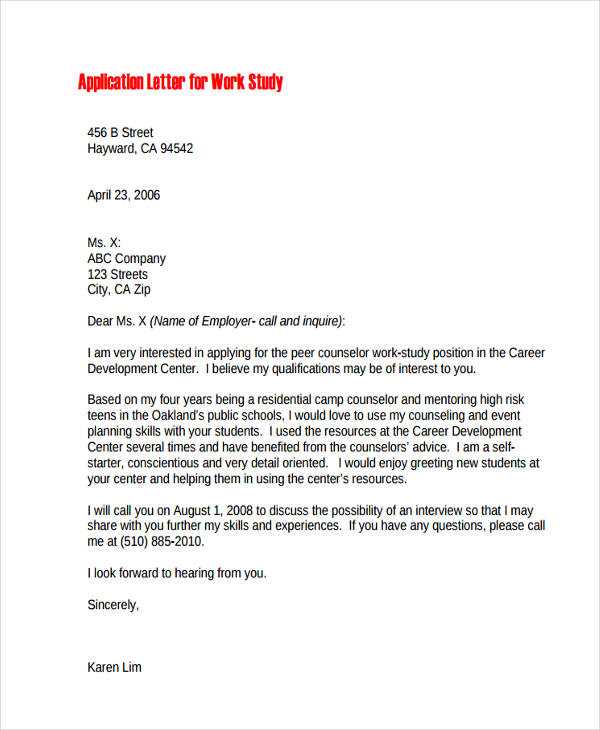
Directly connect your skills to the job description. Choose two or three key strengths that match the company’s needs and show how they will help you contribute. Use brief, impactful examples that showcase your experience in a similar role.
Showcase Your Motivation
Demonstrate your enthusiasm for the company. Explain why you are drawn to the organization’s mission, values, or projects. This shows your genuine interest and will make your application stand out.